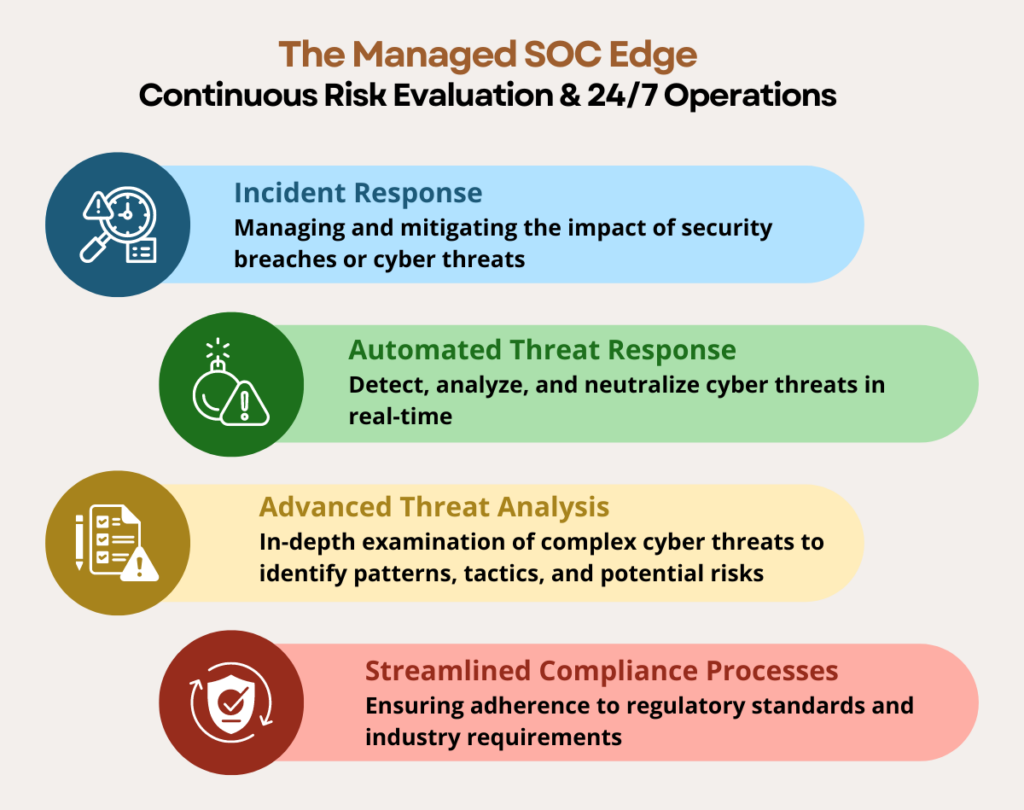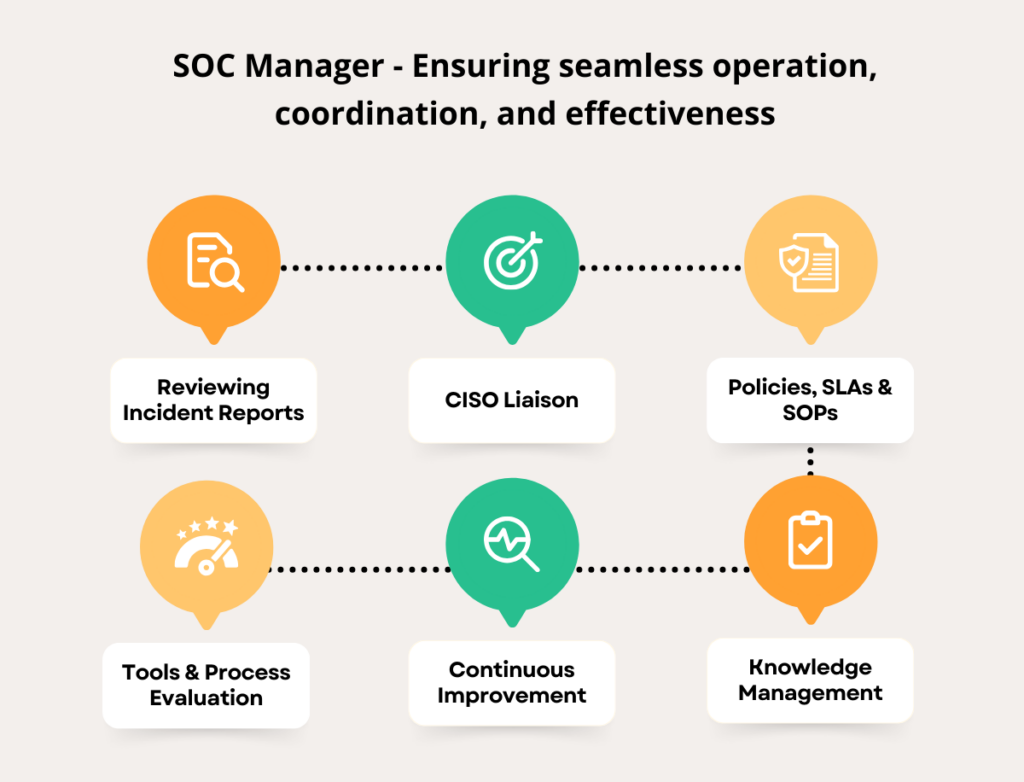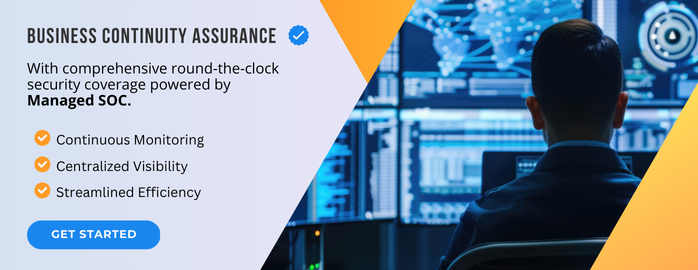Introduction
In today’s hyperconnected technological era, security is of paramount importance for any organization. As businesses increasingly rely on digital infrastructure, the potential risks and vulnerabilities they face also grow exponentially. Cyber threats can disrupt operations, compromise sensitive data, and damage a company’s reputation. To mitigate these risks and safeguard their assets, organizations turn to Security Operations Centers (SOCs).
Whether outsourced or in-house, SOCs ensure stability and unhindered business operations. Building an in-house SOC requires massive capital expenditure and dedicated staff. In contrast, managed SOCs are subscription-based, highly convenient options for small and new enterprises. SOCs help improve organizational security infrastructure, prevent SLA breeches, and ensure compliances are met.
Depending on the organizational need and resources available, companies can opt for customized or generic managed SOC services. In general, some of the features offered by SOCs include- Threat Intelligence, Continuous Monitoring, SIEM & SOAR Integration, Endpoint Detection & Response, Vulnerability Management, and Continuous Reporting.
The Case for Managed SOC Services
Apart from reduced downtime and enhanced security infrastructure, there are many benefits that come with SOCs. Through real-time incident response, automated threat response, advanced threat analysis and streamlined compliance processes ultimately leading to peace of mind.

However, delivering ensuring these operations do not come without their own challenges. Teams in security operations centers work tirelessly to eliminate vulnerabilities, proactively initiate threat response, and mitigate disruptions. They do so through continuous risk evaluation and working in rotating shifts, resolving incidents as and when needed.
Let us look at a normal day in the life of two individuals working in a security operations center.
A Day in the Life of a Managed SOC Analyst
A typical day for a Managed SOC analyst begins with analyzing threat and vulnerability reports.

- An analyst spends a significant part of their day performing vulnerability assessment and elimination of vulnerabilities.
- Some of the remaining is spent reviewing reports of past incidents and the quality of the solution implemented.
- Proactive collaboration amongst individuals with varied expertise leads to incident redirection to the person with right skills and quick response.
- Managed SOC analysts always ensure continuous upgradation of their skills amid evolving threat landscape. They do so by attending relevant conferences, and completing certifications from time to time to stay a step ahead of the intruders.
Despite all this, the schedule for an SOC analyst can become unpredictable in case of sudden security incidents. For example, in case of a surprise attack/downtime, the SOC analyst has to work towards a quick incident response. They isolate the infected sections of the system to prevent larger damages from occurring.
A Day in the Life of an SOC Manager
For an SOC Manager, the workday can be even more challenging.

- A typical day for an SOC manager begins with discussions with team heads about the incidents encountered and measures taken. He resolves internal conflicts and proactively makes efforts for improved collaboration.
- An SOC manager directly reports to the Chief Information Security Officer (CISO) about security operations which makes him a bridge between the internal teams and the CISO.
- Being responsible for training of internal staff, SOC manager facilitates training and knowledge sharing opportunities.
- He or she devises the security policy of the organization. Moreover, he or she ensures each employee is aware of the incident prioritization and standard operating procedures.
- Additionally, the SOC manager reviews the reports created by teams for recommendations and continuous improvement.
- Lastly, the SOC manager regularly analyses the tools being used within the organization to get the teams equipped.
To sum it up, the SOC Manager’s job ensures seamless operation, coordination, and effectiveness of the SOC, ensuring resilience against security threats.
How Managed SOC Services Deliver Operational Efficiency
A nation’s army works tirelessly on borders to ensure the internal affairs remain undisturbed. Analogously, employees at SOCs work tirelessly to ensure the core operations of the company are unaffected by any external threats. A lot of processes must work with absolute accuracy behind the scenes to ensure security resilience. Dedicated teams work in shifts to maintain zero disruptions to the organization’s network at all times.
Advanced Analytics: Advanced analytics help SOCs eliminate any unnecessary effort of dealing with false positives, and categorization of issues in terms of their severity. Additionally, advanced analytics can help improve the efficiency of the employees by automated response to recurring minor issues.
Automation Tools: Dedicated tools that minimize employee efforts over repetitive tasks lead to better resource management and efficient everyday operations. Employees can dedicate their hours to tasks requiring higher expertise and human intervention.
Clearly Defined SOPs: Well-defined standard operating procedures bring rapid enhancements to in-team collaboration and mitigate conflicts at critical hour. These SOPs ensure both backend and front-line operations remain unhindered through effective collaboration.
Using Advanced Tools: Managed SOC service providers use advanced SIEM tools such as Microsoft Sentinel, QRadar, FortiSIEM. Such tools aggregate data from their clients and block attacks timely. For Data Analytics, tools including Splunk, Endpoint Protection, and CrowdStrike bring dashboards, graphs, and visual form to minimize response time.
Continuous Learning: Threat landscape, like technological landscape keeps on evolving. Hence, all individuals in a Managed SOC continuously upskill themselves with new technologies and trends to be future ready. Companies can heavily rely on SOCs for the right action at the right time to minimizes financial and operational losses.
Managed SOCs bring seamlessness to core operations of an organization while dealing with well-equipped intruders and complicated vulnerabilities. Expert teams managing a SOC continuously learn to stay a step ahead of intruders and help prevent SLA breaches. Various tools used in Managed SOC help visualize incidents and streamline vulnerability assessment. Managed SOC services act as first line of defense against external threats in organizations that would want to save precious investments for core operations.

 Product Engineering Services Customized software development services for diverse domains
Product Engineering Services Customized software development services for diverse domains
 Sustenance Engineering Going beyond maintenance to prolong life of mature products
Sustenance Engineering Going beyond maintenance to prolong life of mature products
 Managed Services Achieve scalability, operational efficiency and business continuity
Managed Services Achieve scalability, operational efficiency and business continuity
 Technology Consulting & Architecture Leverage the extensive knowledge of our Domain Experts
Technology Consulting & Architecture Leverage the extensive knowledge of our Domain Experts





























